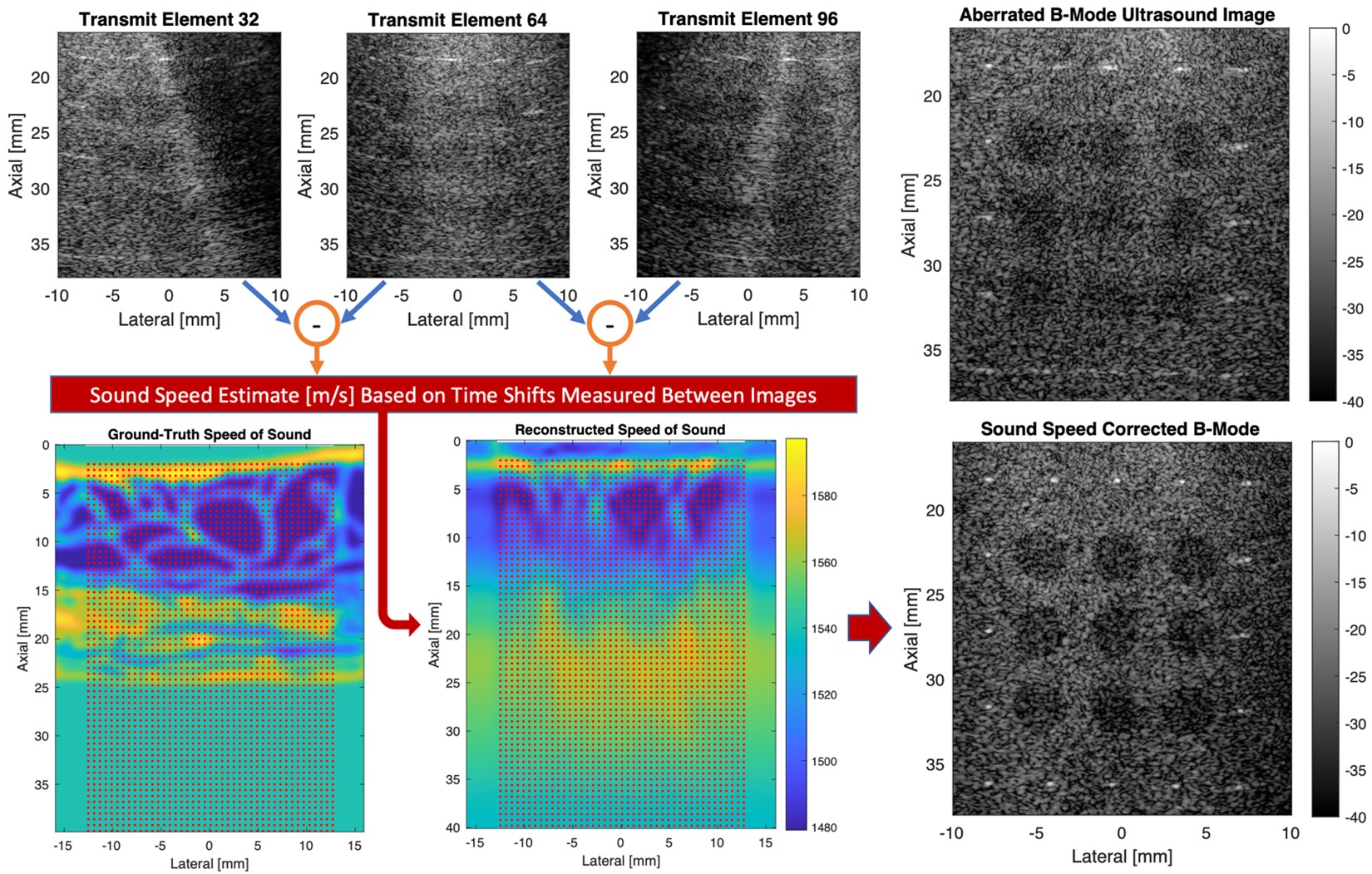Research
Ultrasound Beamforming

One way to create the B-mode ultrasound image is to cross-correlate the transmitted ultrasound signal (in spatial coordinates) with the backpropagated received signals (also in spatial coordinates). The received signal is automatically focused by time reversal over the locations where the transmitted field has passed over. By aligning the transmitted and received wavefields in time, the transmitted pulse effectively acts as a spatiotemporally matched filter for the receive-focused pressure field. Simulating these fields in heterogeneous sound speed automatically corrects the impact of sound-speed-induced aberrations in the image. Our goal is to develop novel approaches to beamform ultrasound images. The figure here shows the impact of using the correct speed of sound when beamforming ultrasound images.
Journal Articles
- Sound speed estimation for distributed aberration correction in laterally varying media
R. Ali, T. Mitcham, M. V. Singh, M. M. Doyley, R. R. Bouchard, J. Dahl, and N. Duric
IEEE Trans Comp Imaging 9 , pp. 367 -382 (2023). View Online - Separation of mainlobe and sidelobe contributions to B-mode ultrasound images based on the aperture spectrum
R. Ali, T. Mitcham, L. Brickson, W. Hu, M. M. Doyley, D. J. Rubens, Z. Ignjatovic, N. Duric, and J. Dahl
J Med Imaging 9(6) , pp. 067001-1 -067001-16 (2022). View Online
